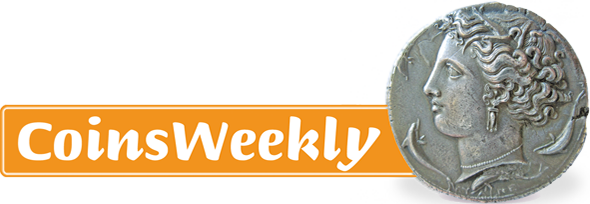A donative of Constantine the Great
This impressive piece belongs to a small series of silver medallions celebrating the vicennalia of Constantine II, the eldest surviving son of Constantine the Great, in 336.
This impressive piece belongs to a small series of silver medallions celebrating the vicennalia of Constantine II, the eldest surviving son of Constantine the Great, in 336.
Two rare aurei of the Gorny & Mosch sale from Augustus’ early years obtained impressive prices. Yet as intriguing as the two coins is the history of the man who minted them: Octavian better known as Augustus.
Lucilla Augusta was very special at her time: not only was she the daughter of emperor Marcus Aurelius, but at the same time she was his co-emperor’s wife. Claire Franklin illustrates by Lucilla’s coin designs how she lived her role.
Why was the human head the motif on coins for centuries, no, for millennia? And why did that change in the last 200 years? In this episode, King Francis I makes a politically necessary decision, which earns him the title “Traitor of Christendom”.
Join us on our trip through the history of Egypt and its capital Alexandria by its coinage. In the final episode you become a witness to the revolt of Zenobia, Queen of Palmyra, and Alexandria’s transition into late antique times.
Why is it that for centuries – or rather thousands of years – the head has served as the motif for the side of a coin? And why has this changed in the last 200 years? This chapter of the series ‘Human Faces’ looks at Augustus and his new image following the Civil War.
Why is it that for centuries – or rather thousands of years – the head has served as the motif for the side of a coin? And why has this changed in the last 200 years? This chapter of the series ‘Human Faces’ looks at the reasons why the attempt to establish national economy in ancient Rome failed.
Why is it that for centuries – or rather thousands of years – the head has served as the motif for the side of a coin? And why has this changed in the last 200 years? This chapter of the series ‘Human Faces’ looks at the reasons why the attempt to establish national economy in ancient Rome failed.
Why is it that for centuries – or rather thousands of years – the head has served as the motif for the side of a coin? And why has this changed in the last 200 years? This chapter of the series ‘Human Faces’ looks at why Julian was nicknamed ‘The Apostate’.
We are the bridge connecting the international numismatic world. Our readers include collectors, professional coin dealers and researchers, as well as all those involved in coin production. We are read in 170 countries! We provide you with information on everything you want to know about the subject of money – from antiquity to the present day. And much more...
Follow us
You need to load content from reCAPTCHA to submit the form. Please note that doing so will share data with third-party providers.
More InformationYou are currently viewing a placeholder content from Facebook. To access the actual content, click the button below. Please note that doing so will share data with third-party providers.
More InformationYou are currently viewing a placeholder content from Instagram. To access the actual content, click the button below. Please note that doing so will share data with third-party providers.
More InformationYou are currently viewing a placeholder content from X. To access the actual content, click the button below. Please note that doing so will share data with third-party providers.
More Information